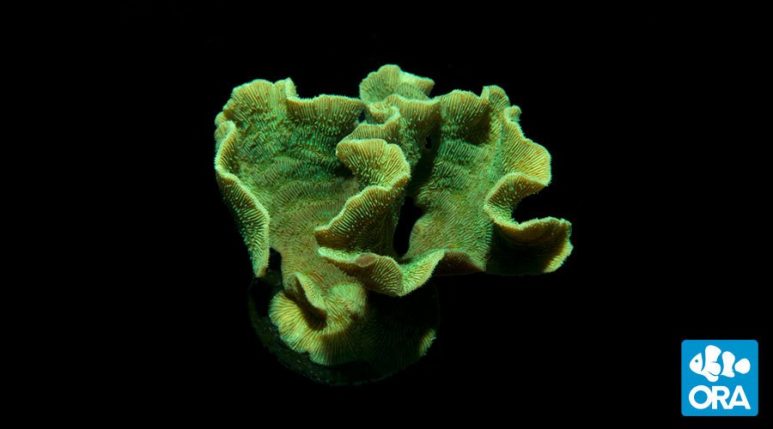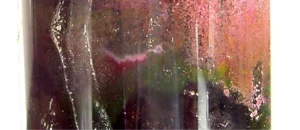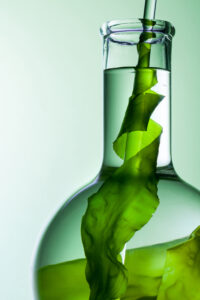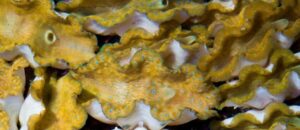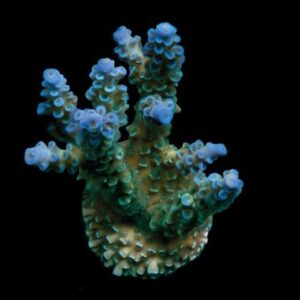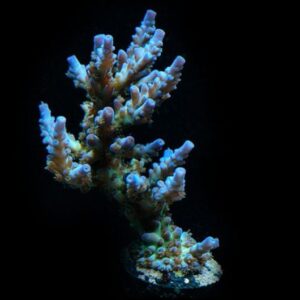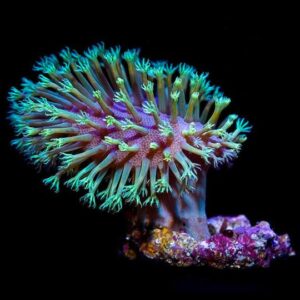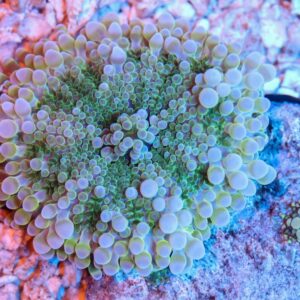Description
In the wild, Pavona are found in the Indo-Pacific off the coasts of Fiji, Tonga, Australia, and several other places. This particular variety of Pavona was obtained from the legendary Julian Sprung by ORA and is now aquacultured. This means the coral is grown in aquariums instead of being collected from the ocean, which comes with benefits we will discuss below.
There are two species of Pavona. There is Pavona cactus and Pavona frondifera. The Mint Pavona is the latter. This coral has a vertical plating growth form, but unlike Pavona cactus, this coral grows close together in a tight form. It is thinner and structurally more delicate compared to its larger cousin. However, it is just as easy to care for as other Pavona. The Mint Pavona prefers low to medium light. This differs from Pavona cactus, which prefers medium to high light. For this reason, this coral probably won’t do well in an aquariums with intense lighting, such as lighting commonly found on Acropora dominate systems. With too much light, you can easily bleach this coral. The Mint Pavona looks best under light on the blue side of the light spectrum. You should also provide a moderate amount of flow. You want to provide enough to avoid detritus from settling on it, but not too much that the flesh recedes or that the coral is pushed of the rock. The lighting and flow requirements for this coral are very similar to LPS corals such as micromussa or chalice corals.
What makes this SPS coral easier than other SPS corals such as Acropora or montipora is its resilience to fluctuation in water chemistry. This coral doesn’t need perfectly stable water. Just like with any stony coral, you need to maintain your calcium, alkalinity, and magnesium levels, but they don’t have to be perfect. When it comes to temperature, simply keep it at 72-78 degrees Fahrenheit and stable. Keep your nitrates at 1-5 ppm and your phosphates just barely detectable. This coral responds well to feeding and can easily grab and consume food. However, feeding is not required because this coral contains a photosynthetic algae called zooxanthellae which provides the coral with most of its nutritional needs. If you want to feed this coral, make sure the food particle size is small enough for the polyps to consume. It is recommended that you spot feed the coral to avoid contaminating your water. Also, you can feed phytoplankton if you want a method that won’t dirty up your water.
Care requirements
Purchase Size: 1 – 2″
Placement: You can place this coral anywhere as long as its lighting and flow needs are met.
Lighting: Low to medium.
Flow: Moderate.
Parameters: 72-78° F, dKH 8-12, pH 8.1-8.4, salinity 32-35 ppt
Calcium: 350-450 ppm
Alkalinity: 8-12 dKH
Magnesium: 1,250-1,350 ppm
More Information
Aquacultured corals such as this Mint Pavona are grown in aquariums. The frags you received from here are well adapted to aquariums life because of this. They are better adapted to aquarium lighting, flow, and parameters. Aquacultured corals are also overall hardier than corals collected from the ocean. What’s more is that aquacultured corals are far less likely to carry disease, though you should still dip and/or quarantine them to be safe. On top of all that, these corals are more sustainable!

